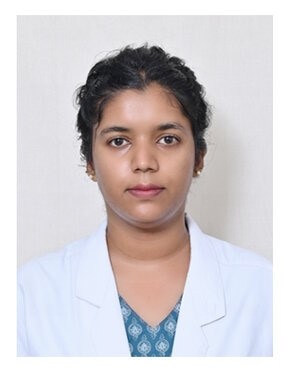Stay warm, balanced, and strong — the yogic way
Introduction:
Have you ever stepped outside on a freezing morning and felt your chest tighten? In cold weather, the body naturally tenses up, breathing becomes shallow, and energy drops. But ancient yogis living in the Himalayas had a powerful secret to staying warm and healthy: Yogic breathing, or pranayama.
Modern science is now catching up to what yogic texts taught centuries ago — specific breathing techniques can generate internal heat, boost circulation, and protect the lungs, making them ideal for people living or traveling in cold climates.
How Does Cold Affect the Body?
Before we explore breathing, let’s understand the challenge:
- Cold air constricts blood vessels, making circulation sluggish
- It dries out nasal passages and throat, increasing infection risk
- The body burns more energy to stay warm, which can lead to fatigue
- Cold stress may increase blood pressure and anxiety in some people
This is where pranayama becomes a natural, non-pharmaceutical way to regulate heat, mood, and immunity.
Best Yogic Breathing Techniques for Cold Weather
- Bhastrika Pranayama (Bellows Breath)
“Just as the blacksmith blows the bellows, similarly, fast breaths should be exhaled and inhaled repeatedly… it kindles agni and burns away all diseases.”
— HYP 2.61
- Rapid, forceful inhales and exhales through the nose
- Effect: Generates body heat, energizes, removes excess mucus
- How to do:
- Sit comfortably with a straight spine
- Take 20–30 forceful breaths (inhale + exhale = 1 cycle)
- Rest, repeat 2 more rounds
- Surya Bhedana (Right Nostril Breathing)
Mentioned in Hatha Yoga Pradipika, this breath activates the “sun channel” to warm the body.
- Inhale through the right nostril, exhale through the left
- Effect: Heats the body, improves circulation, fights lethargy
- How to do:
- Use thumb and ring finger to alternate nostrils
- Do 10–15 rounds, slow and deep
- Ujjayi Pranayama (Victorious Breath)
“Inhale slowly through both nostrils with a slight friction sound at the throat… this removes phlegm and increases body heat.”
— HYP 2.51
- Inhale slowly through the nose with a slight throat contraction
- Sounds like ocean waves or gentle snoring
- Effect: Warms incoming air, moistens throat, calms the mind
- Used by yogis trekking in high-altitude Himalayas!
Other reference:
Gheraṇḍa Saṁhitā (17th century CE)
“The practice of prāṇāyāma removes impurities, balances the doshas, and stimulates the fire of digestion and vitality.”
— GS 5.44–46
Śiva Saṁhitā (14th century CE)
“By control of prāṇa, the practitioner awakens internal fire (jāṭharāgni), which flows through the channels (nāḍīs) and burns away impurities.”- Chapter 3 (Verse 55–60)
What Does Modern Science Say?
Recent studies have shown:
- Bhastrika Pranayama (Bellows Breath)
- Improves oxygen consumption and arterial saturation:
A randomized controlled trial found that Bhastrika significantly increased oxygen saturation (SpO₂), peak expiratory flow, and respiratory function vs. baseline, with modest decreases in heart rate and blood pressure. - Raises metabolic rate and VO₂:
A comprehensive review documented that Bhastrika rapidly increases oxygen consumption—up to 208% increase in VO₂ and significant rises in minute ventilation and CO₂ exhalation.
- Surya Bhedana (Right-Nostril Breathing)
- Metabolism increase without overheating:
A trial measuring body temperature found that Surya Bhedana increased energy expenditure and metabolic rate—but did not increase body temperature, suggesting heat is generated internally via metabolism .
- Ujjayi Pranayama (Victorious Breath)
- Ujjayi breathing increases parasympathetic tone while maintaining warmth and comfort
Cold/High-Altitude Adaptation by practicing pranayama
- Effectiveness in hypoxic/hypobaric conditions:
Yoga-style breathing practices (including modified pranayamas) used at 3,650 m elevation increased arterial oxygen saturation (SpO₂) significantly—from ~89% to ~93%—and helped balance heart rate . - Slow yogic breathing improves oxygenation and hemodynamics:
A study at high altitude showed that slow pranayama enhanced oxygen saturation, optimized ventilation, reduced sympathetic activation, and improved baroreflex sensitivity—critical for cold adaptation .
When and Where to Practice
- Morning time is best — especially before heading into cold weather
- Practice indoors, sitting on a mat or cushion
- Keep the spine upright and chest open
- Avoid on a full stomach or if you feel unwell
Who Should Be Cautious?
- If you have high blood pressure, use slow breathing versions (avoid rapid Bhastrika)
- Avoid Bhastrika if pregnant or after recent surgery
- Always learn from a qualified yoga therapist if unsure
Final Thoughts
Cold climates don’t have to make you feel dull, tired, or tense. With a few minutes of yogic breathing each day, you can:
- Boost your internal heat
- Keep your lungs healthy
- Stay energetic, happy and focused
Ancient wisdom meets modern science — and your breath becomes your best defense.
Try this: Do 3 rounds of Bhastrika + 10 breaths of Surya Bhedana + 2 minutes of Ujjayi tomorrow morning — and feel the difference in your warmth and energy!
REFERENCE:
Anand, A., Kaur, G., Bammidi, S., Mathur, D., Battu, P., Sharma, K., Tyagi, R., Pannu, V., Bhanushali, D., & Limaye, N. (2020). Primer for Mainstreaming Mind-Body Techniques for Extreme Climates-Insights and Future Directions. Medicines, 7(3), 12. https://doi.org/10.3390/MEDICINES7030012
Bash, B., K., A., Shetty, A. A., Singh, J., & Devi, G. (2023). Physiological effect of Bhastrika Pranayama on Cardio-Pulmonary variables among healthy individuals – A Randomized Controlled Trial. Journal of Ayurveda and Integrated Medical Sciences, 8(12), 26–32. https://doi.org/10.21760/JAIMS.8.12.5
Chetry, D., Chhetri, A., & Yadav, K. (2023). Effects of Bhastrika Pranayama (yoga bellows-type breathing) on pulmonary, cardiovascular, and psychological variables: A systematic review. Yoga Mimamsa, 55(1), 67–76. https://doi.org/10.4103/YM.YM_9_23
Spatenkova, V., Bednar, R., Oravcova, G., Melichova, A., & Kuriscak, E. (2021). Yogic breathing in hypobaric environment: breathing exercising and its effect on hypobaric hypoxemia and heart rate at 3,650-m elevation. Journal of Exercise Rehabilitation, 17(4), 270. https://doi.org/10.12965/JER.2142324.162
Telles, S., Gandharva, K., Gupta, R. K., Sharma, S. K., & Balkrishna, A. (2020). Body Temperature in Practitioners of a Yoga Breathing Technique Considered to be Heat Generating. International Journal of Yoga, 13(2), 168. https://doi.org/10.4103/IJOY.IJOY_70_19
Telles, S., Gandharva, K., Sharma, S. K., Gupta, R. K., & Balkrishna, A. (2020). Body Temperature and Energy Expenditure During and After Yoga Breathing Practices Traditionally Described as Cooling. Medical Science Monitor Basic Research, 26, e920107-1. https://doi.org/10.12659/MSMBR.920107
Tryambakrao Kulkarni, G., Pande, P., & Kulkarni, S. (2016). Ayurline (International Quarterly Journal of Research in Indian Medicine (IJ-RIM)). Ayurline: International Journal of Research in Indian Medicine, 7(3), 4. https://doi.org/10.52482/AYURLINE.V7I3.742

Written by Dr. Sharada Shetty P S,
BNYS,MD in clinical yoga

